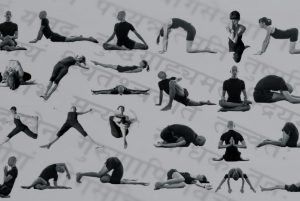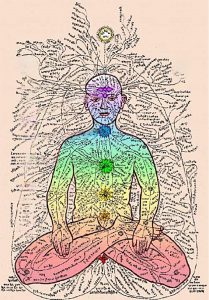Author: Sebastian Pucelle
As a postural practice, Yin Yoga offers different angles and themes to explore, mainly around the physical body and its most apparent mechanical and anatomical aspects. We then turn to the astral body, or the energetic approach via TCM or the chakra system, creating a bridge to the body of thought or causal body, relating to the introspective and contemplative aspect of the practice.
The astral body, or emotional body, is the place where the energy of the meridians (Jing Luo in China or Nadis in India) will be at its full potential, and can be called the Pranamaya Kosha in the Hindu tradition, the energetic envelope containing the prana. Consequently, the Pranamaya Kosha is the essential envelope of the body, which sustains life. This layer of our being is most interesting to yogis as it forms the bridge between a person’s physical and psychological aspects.
From a medical and energetic point of view, the body’s vital energy called Qi/Prana must continuously be circulating in the body for the system to remain healthy. When the Qi/Prana stagnates, it creates an imbalance that manifests as a deficiency or excess in the meridian system. This can be experienced as a feeling of discomfort at best. If it is recurrent, it will develop into a pathological form.
All modes of exercise move the Qi/Prana of the body, and the alternating contractions and relaxations of the muscular system are well known to encourage the movement of energy in the body, which includes all forms of yoga.
The particularity of yin yoga is that it applies passive traction to the body’s connective tissues (fascias, ligaments, joint capsule, cartilage and tendons). To target the connective tissues, the practice of yin yoga first establishes a relaxed attitude in the pose by disengaging the muscles, and then the practitioner holds the pose for an extended period, allowing the connective tissues to adapt mechanically to the stress exerted by the pose.
This regular application will first strengthen the connective tissues by increasing their resilience and adaptive qualities. Then, when the pose is released, the Qi/Prana is encouraged to move through its respective network.
Practitioners have no control over how the body uses this impetus to reorganise the flow of Qi.
Still, the sense of well-being that emerges from the practice indicates a healthy reset, which can be easily felt physically and emotionally.
By way of analogy, let’s imagine the body as a multitude of tubes inside other tubes, such as fascias, muscle fibres, veins, capillaries, bones, etc.. everything is a tube with something circulating inside.
Let’s take a garden hose where water flows freely to spray the flowers. Suddenly, because of a knot, the water does not flow; upstream, the water accumulates as an excess, and downstream, the lack of water is perceived as a deficiency.
The gardener resolves the problem by untying the hose, and instantly, the water starts to flow again. The excess rushes down the hose and gushes out to the end, and finally, the stream resumes its normal course.
The Yin Yoga practice acts in a very similar way. While holding the posture, we are not enhancing the flow of Qi but creating tension and compression felt as a restriction in our range of motion. When the pose is released, like the water of the garden hose, the Qi will be enhanced, and movement will increase. This specific part of the practice is called “the rebound”.
The stimulation of connective tissues in yin yoga practice leads to energetic movement in the meridians and improves not only the flexibility of the physical body but also our energetic balance. Therefore, the practice is not just limited to increasing one’s range of movement.
Experienced yogis will reach their maximum amplitude after a few years of practice, so we can ask ourselves: Why continue to practice postural yoga?
1 – Because the body’s flexibility fluctuates and tensions return regularly depending on our level of stress, fatigue and quality of life, there is a physiological shortening of our tissues that we can delay.
2 – Because after each practice, we feel energetically different.
When one spends hours in deep meditation, with a frugal diet and a very calm, sedentary lifestyle, the energy can be felt moving through the body. This is a very tangible thing, and when energy stagnates, it disrupts health and meditation. The practice of asanas and their relaxation allows the movement and reharmonisation of the Qi.
The Modern Meridian Theory
The postures are necessary to stimulate the joints and encourage them to maintain a healthy meridian system. Modern meridian theory explains very clearly why we do yoga: if we do not work on the connective tissues and joints, we compromise the body’s energy system.
Modest, moderate exercise to stimulate the joints is essential, not only to maintain a full range of motion but also because the movement of energy is vital to nourish, heal and maintain all tissues in good health. Connective tissues should be called meridian tissues. From an anatomical point of view, connective tissues only serve to hold the different parts of the body together, so when scientists cut out the tissues to find the organs and then cut out the connective tissues to find the meridians, what they cut out were the meridians. It changes everything to see connective tissues as living, pulsating tissues that circulate energy in the body.
If we open an anatomy book and look at where the connective tissues are in the body, they are everywhere.
Classical writings on yoga refer to the nadis, of which there are 350,000. The Hatha Yoga Pradipika highlights 72,000 nadis in the body, of which 10 rank as significant, 3 representing the essential system: Ida, Pingala and Sushumna. Then, we never heard about the others.
The life force must travel through every cell of the body. All forms of yoga stimulate the body’s meridians, but Yin yoga is unique because of its stimulation on the joints. Yin yoga will not make you stronger or develop your coordination and balance. It is not a complete system in itself, which is why it is called Yin and not Taoist.
What are the meridians?
For a long time, conventional medicine had great difficulty proving the existence of meridians, as it was simply impossible to open up a body to find them until the modern theory of meridians was developed.
How did all this knowledge and understanding of the meridian network develop? And how does it work?
This is what Dr. Motoyama established 40 or 50 years ago. He reached practical and pragmatic scientific conclusions which allow us to state that the meridians are neither nerves nor blood vessels. They are water channels in the body known as “liquid crystal”. Our professors, Paul and Suzee Grilley, played a decisive role in advancing and transmitting these theories.
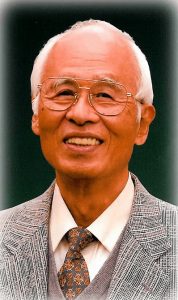 Dr Motoyama did research in this area, and he said with emphasis that meridians are the opposite of blood vessels, namely that in the latter, you find a tube made of collagen fibres, like an artery or a vein, inside which a liquid circulates, which could be lymph, blood or something else. It was expected to find the same things when researching the meridians, but the problem is that they are not structured this way.
Dr Motoyama did research in this area, and he said with emphasis that meridians are the opposite of blood vessels, namely that in the latter, you find a tube made of collagen fibres, like an artery or a vein, inside which a liquid circulates, which could be lymph, blood or something else. It was expected to find the same things when researching the meridians, but the problem is that they are not structured this way.
A meridian is formed in this way, but it is necessary to realise that there are very thin films of water all along the different layers of your connective tissue. Water is everywhere in the body; we are mainly made up of water – 90% of our molecules and 60% of our body weight are water, most of which is found in our connective tissue and blood.
However, muscle and connective tissue contain much more water than blood. The body has only about 4 litres of blood, representing a third or a quarter of the actual fluid volume. The rest of our water volume is found in the skin, muscles and organs. Therefore, water is omnipresent in the body, without which almost none of the chemical reactions we know to be essential to life could occur.
Water mediates almost all vital chemical reactions, even within the cell.
The discovery is that the water in cells is not liquid. The water in the cell is in the form of liquid crystals. Usually, when we think of water as a random collection of molecules, it is considered to have a structure only when it is immobile in the form of ice. An intermediate phase occurs in the body where water is no longer liquid; it is no longer a molecule, is no longer random, and is completely ordered.
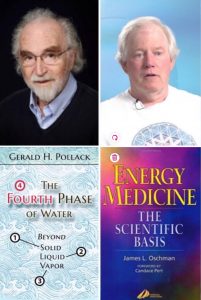 Gerald Pollack and James Oschman have developed the latest research on this subject, the two most recent of whom talk about the incredible amount of water in the body and things we never knew existed.
Gerald Pollack and James Oschman have developed the latest research on this subject, the two most recent of whom talk about the incredible amount of water in the body and things we never knew existed.
Water is present everywhere in the body, but where it is structured and has a direction it is a meridian. What is unique about the liquid crystal phase of water is that it structures the meridian, and this structure of water conducts electricity, and Qi flows along the meridian. The meridian is a very loose structure, but it is structured, which means that the negatives and positives of the water align, and the Qi now flows.
Dr Motoyama has been measuring it accurately and precisely for decades. How much electricity does this system conduct? How fast does it conduct? How much energy can it hold before it spills out and can no longer support it? He measured all these parameters.
When science tried to find tangible evidence of the location of the meridians, researchers did what they knew best in anatomical dissection research. But when they started dissecting corpses, they found no trace of the meridians because the first thing that happens at death is that all the fluids in the body dissipate and drop.
Dr Motoyama searched for and found coiled hyaluronic acid molecules, the only remaining evidence that this was once a meridian.
These hyaluronic acid granules form lines that overlap entirely with the ancient meridian maps described in the classics of Chinese medicine.
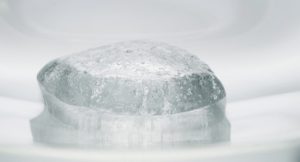 Hyaluronic acid has a high molecular weight and is a natural constituent of connective tissue. It is naturally present in our body. But its quantity decreases drastically with age, so it is estimated that at 50 years of age, our stock is already diminished by half. Hyaluronic acid has a formidable hydrating action since each molecule is capable of fixing more than 1000 to 5000 times its weight in water, like a sponge!
Hyaluronic acid has a high molecular weight and is a natural constituent of connective tissue. It is naturally present in our body. But its quantity decreases drastically with age, so it is estimated that at 50 years of age, our stock is already diminished by half. Hyaluronic acid has a formidable hydrating action since each molecule is capable of fixing more than 1000 to 5000 times its weight in water, like a sponge!
The Qi of a living body moves into the meridian and creates the meridian but stops circulating and disappears at physical death, and the meridian melts away; there is nothing left to find. The only physical shreds of evidence of the existence of meridians after death are the H.A granules.
Conclusion: There is, therefore, a change in the phase of the tissues and the water content, which occurs during the practice of yin yoga. This explains what happens when we release the asana and feel the rebound.
The following statement summarises the practice process: yin yoga is the gentle application of tension and compression to encourage a healthy phase change in the tissues, otherwise known as fascia.
This phase change created by the stimulation of connective tissue promotes our health and our state of homeostasis. Regular practice of yin yoga promises to maintain the holistic coherence of our being. By mechanically manipulating the physical body, we also build bridges towards understanding the well-being of our astral and causal bodies.
***
Sebastian Pucelle
Sebastian Pucelle has been involved in yoga since the early 90s.
He has trained and taught in various fields such as martial arts, shiatsu, natural medicine and meditation.
You can find out more about his teachings with his partner at: with-yinyoga.com


